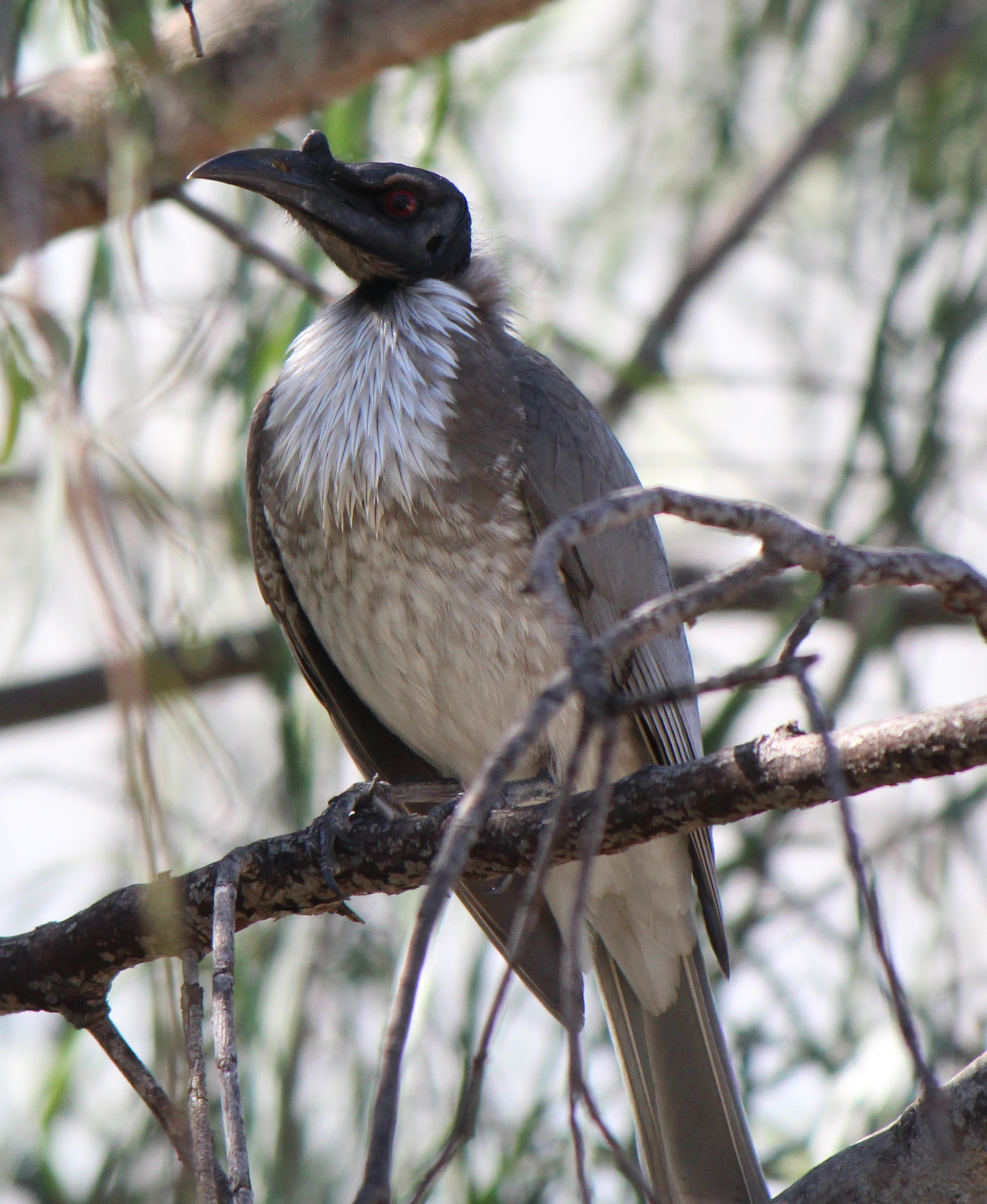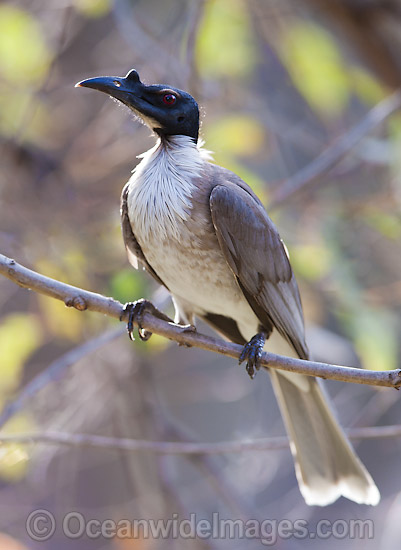
Philemon corniculatus
TAXONOMY
Merops corniculatus Latham, 1790, Endeavour River, Queensland,
Australia.
OTHER COMMON NAMES
English: Leatherhead, four-o’clock; French: Polochion criard;
German: Lдrmlederkopf; Spanish: Filemуn Gritуn.
PHYSICAL CHARACTERISTICS
13 in (33 cm); 3.4–4.4 oz (96–122 g). Bare black head and upright
knob on bill. White throat, breast, and tail, with darker
upperparts.
DISTRIBUTION
Eastern Australia from coast to edge of plains and along Murray
River. Trans-Fly region of New Guinea. Separate subspecies
in north Queensland and New Guinea.
HABITAT
Woodlands and open forests, coastal heathland, farmland,
parks and gardens.
BEHAVIOR
Can be noisy and quarrelsome at flowering trees, but also quiet
and unobtrusive when breeding. Comical calls, like four o’clock,
tobacco, chocka-lock, etc. by males. Calls become more complex
when pairs chase around during breeding season. Pairs may
duet. Also emit softer calls and harsh alarm calls. May strike
predators, including humans, near nest.
FEEDING ECOLOGY AND DIET
Nectar of eucalyptus, mistletoes, or other plants; sometimes eat
native or cultivated fruit. Insects and spiders taken by gleaning
from foliage or capturing in flight, including large scarab beetles
and cicadas. Exceptionally take eggs, young birds, and fish.
REPRODUCTIVE BIOLOGY
May breed from August to March, but season can be short in
any locality. Nests are large and conspicuous and globular,
made of bark, grass, and often wool and placed on outer
branches of eucalyptus and other trees or in saplings. Probably
only female builds nest and incubates. Usually lay three eggs
(occasionally two or four), which hatch after about 16 days.
Young fledge at 16–17 days.
CONSERVATION STATUS
Not threatened.
SIGNIFICANCE TO HUMANS
Sometimes shot at wineries and orchards when feeding on
fruit.
Photo Gallery of - Noisy friarbird




 Animalia Life
Animalia Life